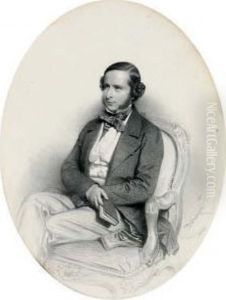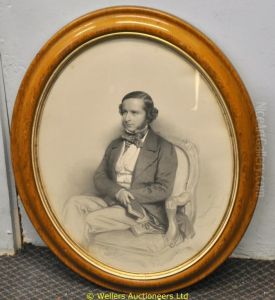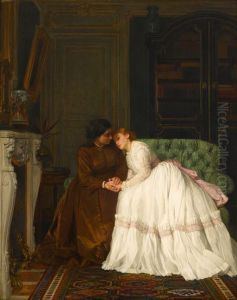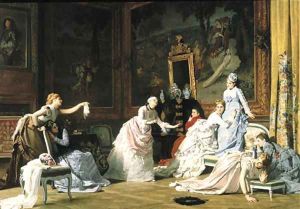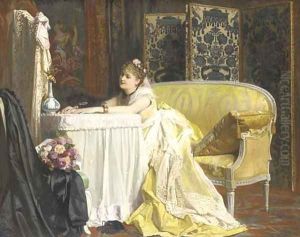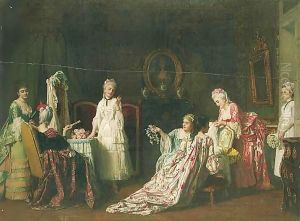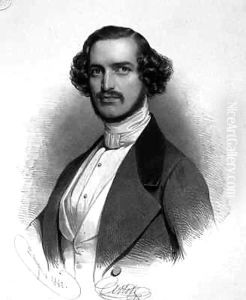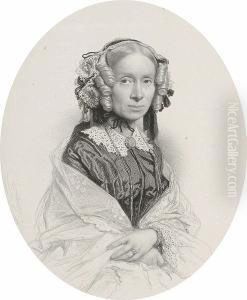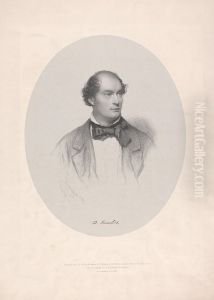Charles Baugniet Paintings
Charles Baugniet was a Belgian artist born on February 27, 1814, in Brussels. He was a versatile artist, working as a painter, lithographer, and composer during the 19th century. Baugniet initially trained at the Académie Royale des Beaux-Arts in Brussels, where he focused on painting. However, he is best known for his work in lithography, a field in which he was largely self-taught.
During his career, Baugniet created portraits of many notable figures of his time, including European royalty and artists. His portraits are characterized by their fine detail and expressive character, capturing the personality and status of his subjects. Baugniet was at the forefront of the lithographic movement in Belgium and was instrumental in popularizing this form of printmaking.
In addition to portraiture, Baugniet also contributed to the illustration of books and sheet music covers, further demonstrating his versatility as an artist. His work in this area was marked by a clear and elegant line, which made his illustrations highly sought after by publishers.
Although Baugniet dabbled in the world of music composition, it was his visual art that left a lasting legacy. His contributions to lithography and his skill as a portraitist kept him in demand throughout his career. Baugniet eventually moved to Paris, where he continued to work until his death on July 5, 1886. His works remain a testament to the rich cultural scene of 19th-century Europe and continue to be appreciated by art historians and collectors alike.





